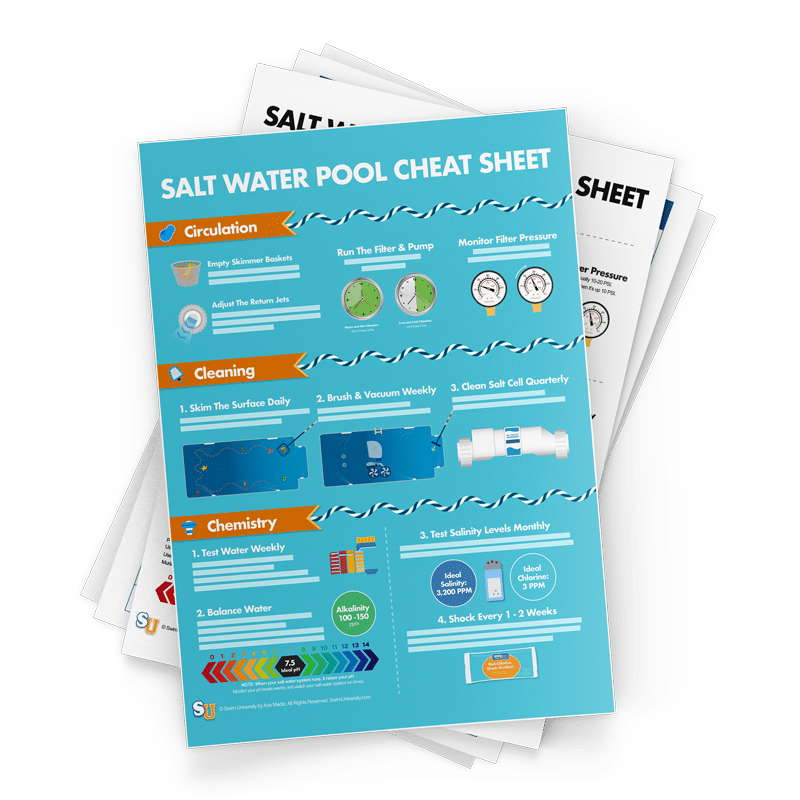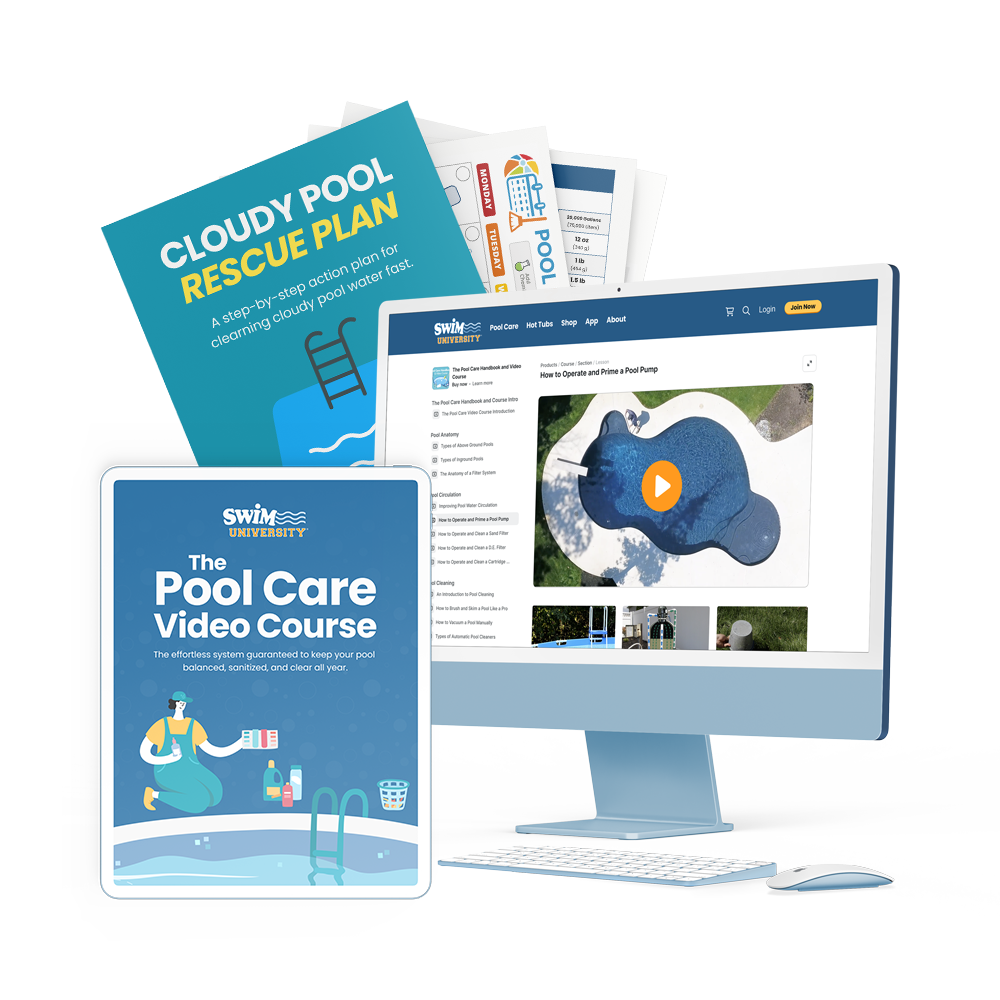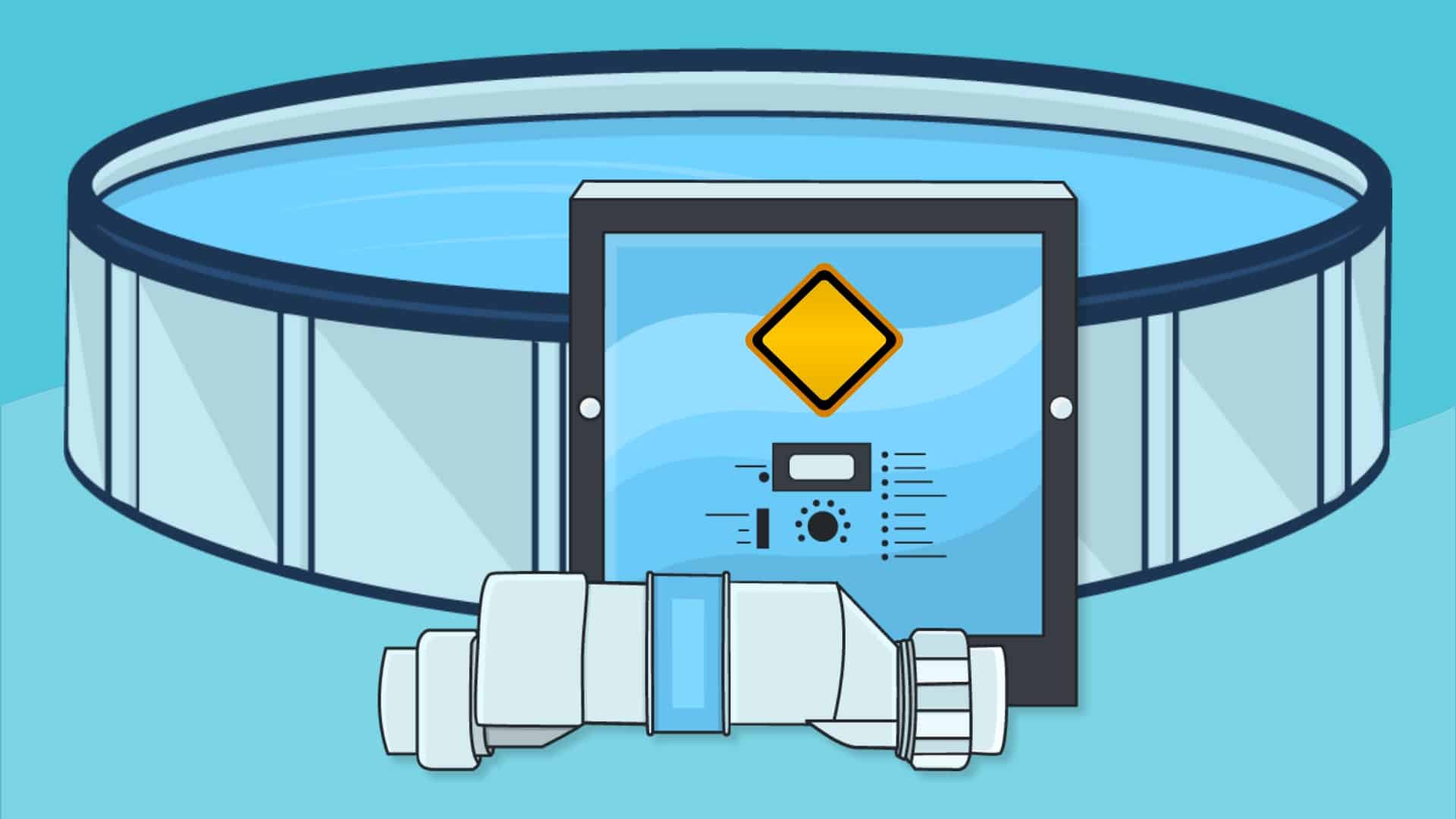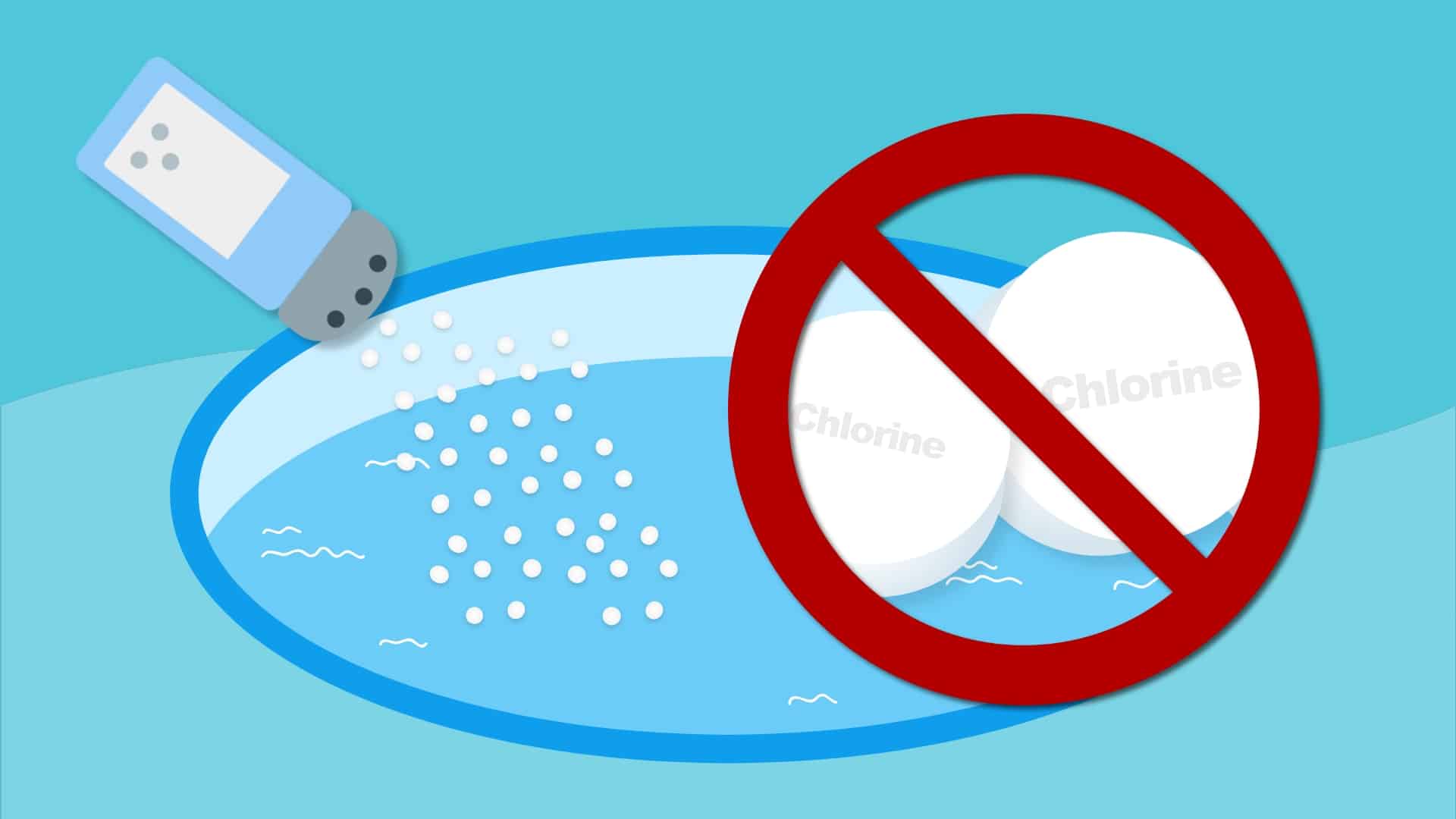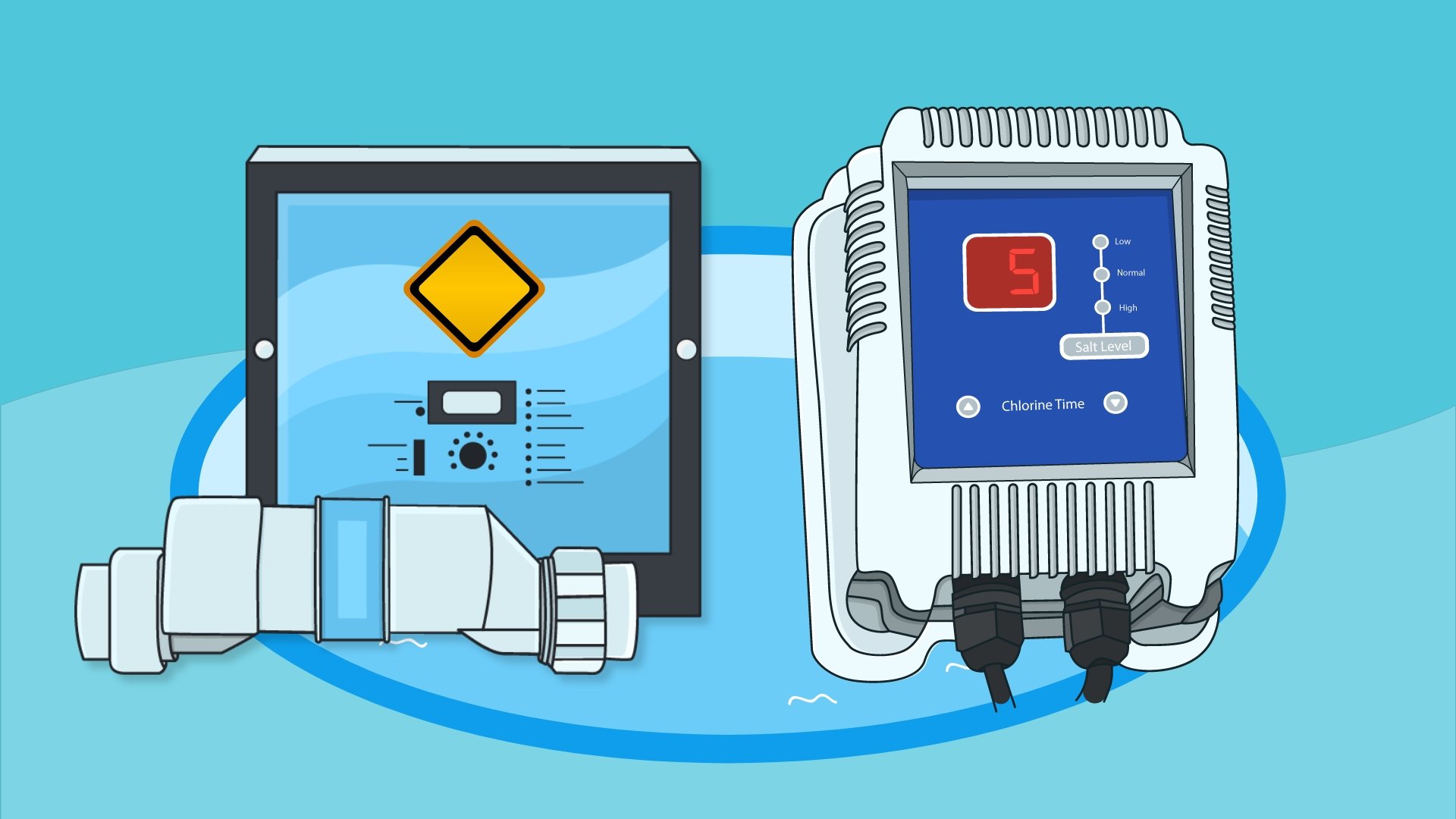9 Common Salt Water Pool Maintenance Mistakes
Salt water pool maintenance is a bit different than traditional pool care. While you don’t have to add as many chemicals with a salt water pool, you do have to balance your water and care for your pool equipment a little differently.
So here are 9 common salt water pool maintenance mistakes and how to avoid them. Check it out.
Stop wasting time and money with confusing water chemistry and maintenance. Our effortless system guarantees to keep your pool balanced, sanitized, and crystal clear all year. Works for all pools including saltwater.
Mistake #1. Thinking A Salt Water Pool Has No Chlorine
When you add salt to your pool, your salt water generator uses that dissolved salt to create chlorine. That’s right: your saltwater pool is still a chlorine pool.
The only difference? You’re adding salt instead of chemicals to make that chlorine happen. As a result, your salt water generator also produces a steadier, lower chlorine level than a typical pool. That means the water is gentler on your skin and eyes.
Here’s our definitive guide to salt water generators to learn more.
Mistake #2. Not Testing Your Free Chlorine Levels Each Week
Like we said, your salt water generator produces chlorine. And that means you need to test and balance your free chlorine levels to keep your water sanitized. Your free chlorine levels should be between 1 and 3 parts per million, with 3 parts per million being ideal.
Test your water weekly with test strips or a liquid test kit. Then adjust your generator accordingly if your chlorine levels are off. You can keep your chlorine levels slightly higher than you would with a traditional pool because of how the chlorine is produced and dispersed by your salt water generator.
Tests for 7 important chemistries in seconds: Total Hardness, Total Chlorine, Total Bromine, Free Chlorine, pH, Total Alkalinity, and Cyanuric Acid.
Just make sure your salt levels are high enough for your generator to work correctly and that you don’t have any calcium build-up on your salt cell.
Mistake #3. Not Keeping Your pH Levels In Check
Your pH will run on the high side in a salt water pool because your salt water generator naturally raises your pH as the system runs. High pH levels above 7.6 can lead to skin irritation and burning eyes and cause scaling on your pool equipment.
So be sure to test and balance your pH every week. You can add a pH decreaser to lower your pH levels or muriatic acid.
If you have a chronically high pH problem, make sure your other levels are balanced, like your CYA. And check the run times on your salt water generator.
Remember, it’s your system running that produces higher pH levels. So you shouldn’t need to run your system for more than 10 hours a day. For more information on how long your run your filter system, click here.
Mistake #4. Adding Too Much Salt Too Quickly
The upside of a salt water pool? Once you add salt, it stays in the water. In addition, salt doesn’t evaporate, which means it can continuously flow through your salt water generator and produce chlorine.
The downside? If you add too much salt, it’s a pain to lower your levels.
Also, your salinity levels only go down with rain, splash out, or by diluting your water manually. So be sure to add your salt slowly and test your levels as you go, especially if it’s the beginning of the pool season.
Professional Pool Salt crystallizes early to match the fastest dissolve rates on the market - no more waiting for hours for chlorine tablets to dissolve and produce beautiful clean water.
Mistake #5. Not Testing Your Salinity (Or Salt Levels) By Hand
Most salt water generators display your water’s salinity level. But it’s always smart to manually test your salt levels if your system is producing a false reading.
Check your salinity levels once a month during the pool season. You’ll also want to check after a heavy rain, heavy use, or if you’ve drained out lots of water. You can use salt water test strips, or we recommend using a digital salinity reader.
This Digital Salinity Tester is an accurate, easy way to verify the salt levels in your pool. Simply place the tester in your pool water for a digital salinity reading.
Check your salt water generator instructions for the correct salinity levels for your system.
Mistake #6. Not Testing and Balancing Your Alkalinity, Stabilizer, and Calcium Levels Each Month
As well as testing your salinity levels once a month, you should test your alkalinity, stabilizer, and calcium hardness levels.
Alkalinity
Alkalinity helps buffer your pH from fluctuations, and your alkalinity levels should be between 100 and 150 ppm. But like we said, your pH levels will rise naturally with a salt water generator.
That means alkalinity is a bit less important, and it’s okay if your alkalinity levels run a bit lower than 100 ppm. If you need to raise your alkalinity levels, you can use an alkalinity increaser or baking soda.
If you need to lower your alkalinity levels, you will actually use pH decreaser or muriatic acid.
Chlorine Stabilizer
Stabilizer, aka CYA levels, should be between 30 and 50 ppm in a traditional pool. But many salt water pool owners find it helpful to maintain CYA levels of 80 ppm, especially if you’re having trouble keeping your chlorine levels up in your pool.
Keep your chlorine from being burned off too quickly by the sun's UV rays. CYA will help you keep a better chlorine reading in your pool.
Calcium Hardness
Calcium hardness levels should be kept between 200 and 400 ppm. High calcium hardness levels can calcify and burn up your salt cell or scale at your pool’s waterline. If your calcium hardness levels are too high, you’ll need to dilute or drain some of your pool water.
Adding calcium hardness to your pool water will protect and extend the life of your pool walls including vinyl, fiberglass, and concrete.
Be sure to fill up your pool using a hose filter to avoid adding any hard water.
NOTE: If you have a vinyl liner pool that you drain and take down at the end of the season, you do NOT need to add any calcium hardness to your water. And here’s some more information on how to raise and lower your calcium hardness levels in your pool.
Mistake #7. Forgetting To Shock Your Pool Regularly
Shocking your pool is the process of adding an extra boost of chlorine to help raise your free chlorine levels. Regularly shocking your pool also helps destroy additional contaminants, algae, and bacteria.
If your salt water generator has a “BOOST” mode, it can disperse extra chlorine from your system.
You can also shock your pool by manually adding granular dichlor chlorine or liquid chlorine. Just be sure to check your CYA levels after using stabilized chlorine. And try to avoid cal-hypo shock that can cause calcium build-up in your salt cell. Here’s how to add shock to your pool.
We recommend using the “BOOST” mode or shocking your pool once a week during peak pool season or after heavy rain or heavy use. Make sure to add this extra chlorine at night to let it dissipate and so the sun doesn’t burn it away. Then retest your water the next day.
Mistake #8. Letting High Salt Levels Break Down Your Pool Equipment And Surfaces
Salt water isn’t harmful in average concentrations. But if your salinity levels get too high or if it builds up on surfaces, it can start to break down your pool equipment, pool liner, and pool cover.
Use a pool lube to prevent your O-rings from breaking down. For pool lights and ladders, rinse them with a garden hose once a week.
Use this stuff liberally on all rubber o-rings to get a tighter seal and it'll make them last longer too!
Splash out can lead to high concentrations of salt on the outside of your pool liner, so rinse this off as well. Splash out can also erode limestone or other soft stone coping around your pool.
If you have an automatic pool cover, salt residue can corrode your cover’s components. So rinse off your cover’s tracks and hardware with a garden hose every few weeks.
Mistake #9. Forgetting To Inspect Your Salt Cell
Things like calcium can build up over time on a salt cell. Therefore, you’ll want to inspect and clean your salt cell every 3 months and at the beginning and end of the pool season.
Open and inspect your salt water cell to check for scale build-up and deposits. If there are deposits, use a high-pressure hose to flush them off.
You can also use a diluted solution of muriatic acid to get rid of more challenging deposits. Be sure to follow any cleaning directions that came with your salt water generator.
Now, if you want more help taking care of your salt water system throughout the season, grab our FREE Pool Care Cheat Sheet. Also here are some more common mistakes that pool owners make in case you’re interested in learning more.
3 Ways We Can Help With Your Pool
- Pool Care Cheat Sheets (Free): Easy-to-use downloadable guides to help you keep track of taking care of your pool this year.
- The Pool Care Handbook: An illustrated guide to DIY pool care, including water chemistry, maintenance, troubleshooting, and more.
- The Pool Care Video Course: You’ll get 30+ step-by-step videos and a downloadable guide with everything you need to know about pool maintenance.
